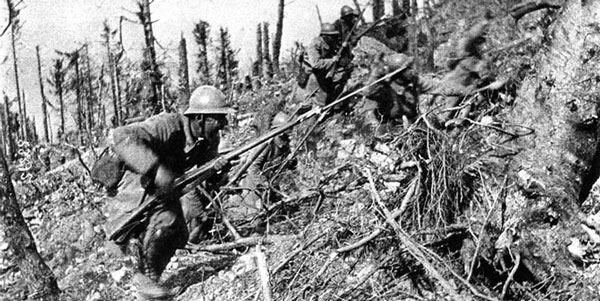The main battlefields of World War I was the Western Front, running from the Swiss border in the south to the North Sea. Most of the Western Front’s 700 kilometer length traversed the north-east of France, ending in Belgium and southern Germany. The largest battles of the war – Marne, Ypres, Verdun, the Somme, Passchendaele and others – were fought along the Western Front.
The death toll from the deadly, ferocious battles will never be accurately known, at least 4 million were killed there. The horrors of Western Front were often characterized by mud-filled trenches, artillery bombardments, appalling tactical blunders, futile charges on enemy positions, periods of stalemate, high death rates and atrocious conditions. Here are an incredible collections of photos of the horror of the Western Front from 1914 to 1918.
Looking out across a battlefield from an Anzac pill box near the Belgian city of Ypres in West Flanders in 1917. When German forces met stiff resistance in northern France in 1914, a “race to the sea” developed as France and Germany tried to outflank each other, establishing battle lines that stretched from Switzerland to the North Sea. Allies and Central Powers literally dug in, excavating thousands of miles of defensive trenches, and trying desperately to break through the other side for years, at unspeakably huge cost in blood and treasure.
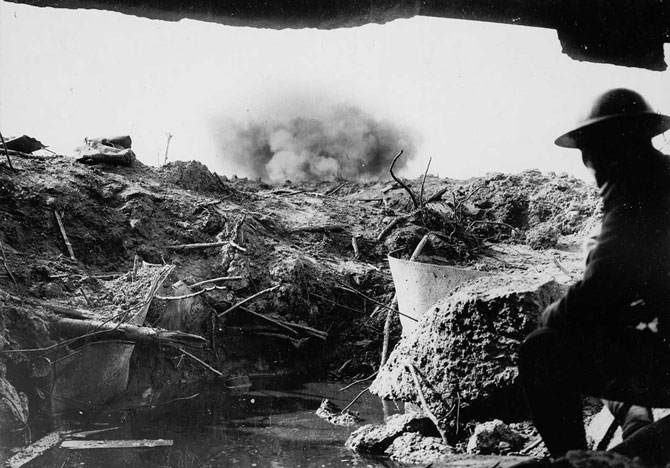
Photo credit: Bibliotheque nationale de France / National Library of Scotland / National Archives
Bombardment of the Cathedral of Reims, France, in September of 1914, as German incendiary bombs fell on the towers and on the apse during the German invasion of northern France.
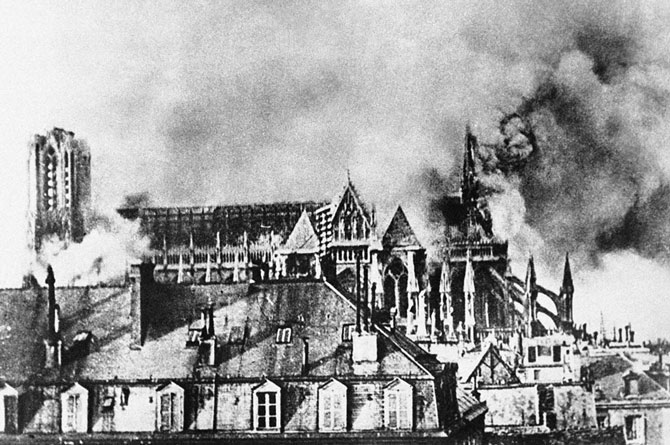
Photo credit: Bibliotheque nationale de France / National Library of Scotland / National Archives
French soldiers on horseback in street, with an airship “DUPUY DE LOME” flying in air behind them, between ca. 1914.
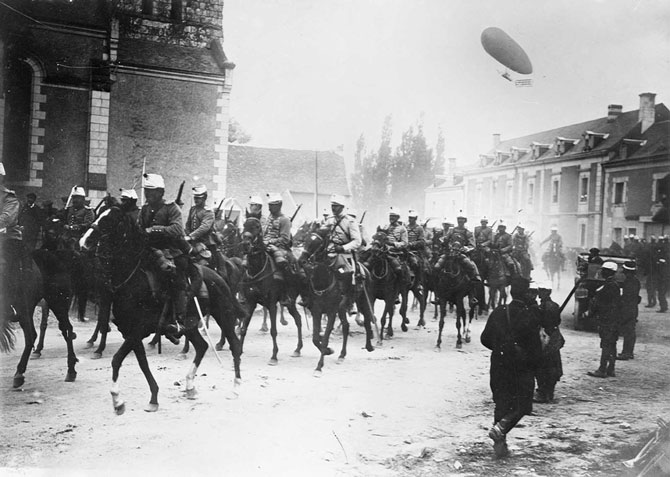
Photo credit: Bibliotheque nationale de France / National Library of Scotland / National Archives
A French pilot made an emergency landing in friendly territory after a failed attempt to attack a German Zeppelin hangar near Brussels, Belgium, in 1915. Soldiers are climbing up the tree where the biplane has landed.
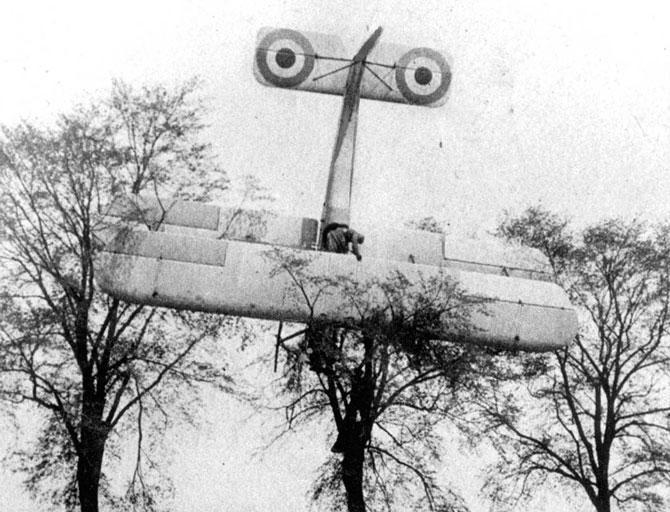
Photo credit: Bibliotheque nationale de France / National Library of Scotland / National Archives
German officers in a discussion on the Western Front. (The man 2nd from right, in fur collar is possibly Kaiser Willhelm, the caption does not indicate). The German war plan had been for a swift, decisive victory in France. Little planning had been done for a long-term, slow-moving slog of a battle.
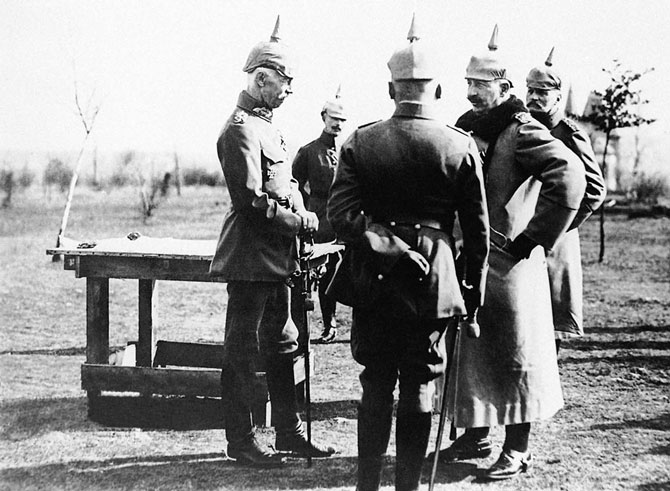
French soldiers in a bayonet charge, up a steep slope in the Argonne Forest in 1915. During the Second Battle of Champagne, 450,000 French soldiers advanced against a force of 220,000 Germans, momentarily gaining a small amount of territory, but losing it back to the Germans within weeks. Combined casualties came to more than 215,000 from this battle alone.
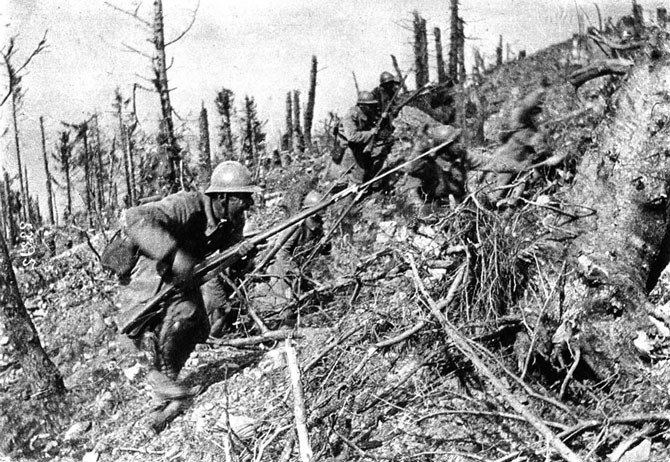
A downed German twin-engined bomber being towed through a street by Allied soldiers, likely from Australia, in France.
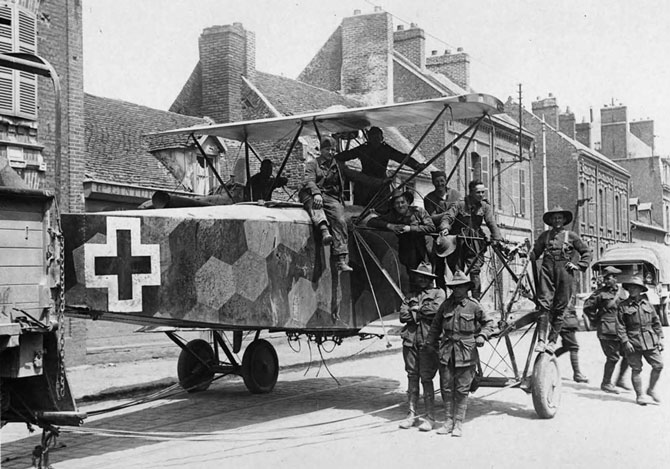
Photo credit: Bibliotheque nationale de France / National Library of Scotland / National Archives
Six German soldiers pose in a in trench with machine gun, a mere 40 meters from the British line, according to the caption provided. The machine gun appears to be a Maschinengewehr 08, or MG 08, capable of firing 450-500 rounds a minute. The large cylinder is a jacket around the barrel, filled with water to cool the metal during rapid fire. The soldier at right, with gas mask canister slung over his shoulder, is peering into a periscope to get a view of enemy activity. The soldier at rear, with steel helmet, holds a “potato masher” model 24 grenade.
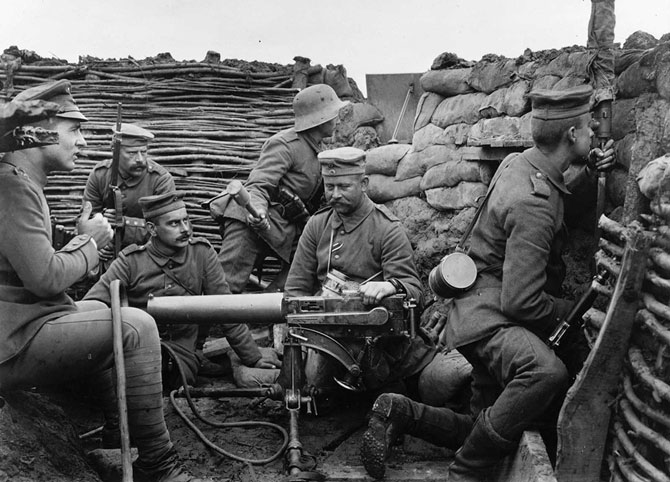
Photo credit: Bibliotheque nationale de France / National Library of Scotland / National Archives
Harnessed dogs pull a British Army machine gun and ammo, 1914. These weapons could weigh as much as 150 pounds.
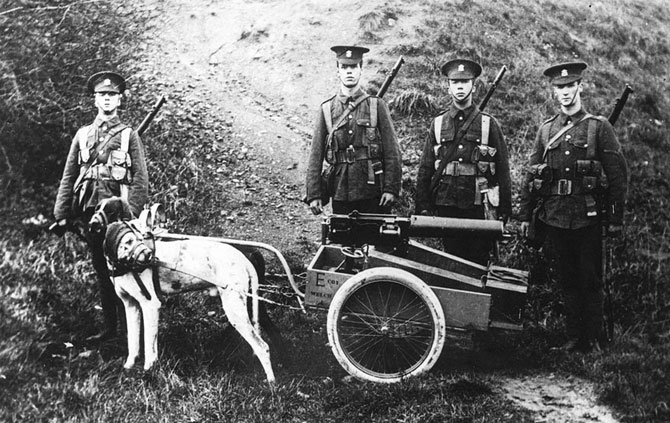
Photo credit: Bibliotheque nationale de France / National Library of Scotland / National Archives
German captive balloon at Equancourt, France, on September 22, 1916. Observation balloons were used by both sides to gain an advantage of height across relatively flat terrain. Observers were lifted in a small gondola suspended below the hydrogen-filled balloons. Hundreds were shot down during the course of the war.
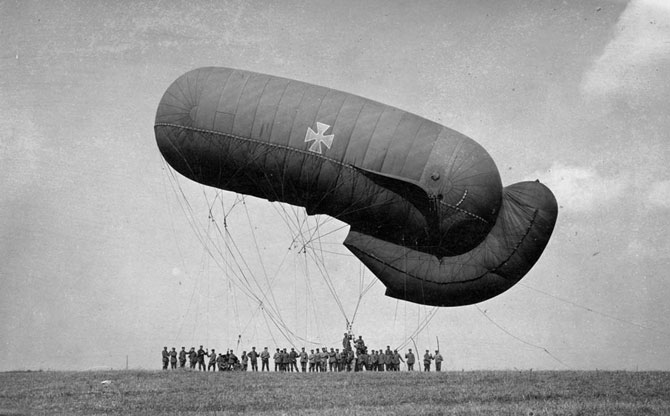
Photo credit: Bibliotheque nationale de France / National Library of Scotland / National Archives
French Reserves from the USA, some of the two million fighters in the Battle of the Marne, fought in September of 1914. The First Battle of the Marne was a decisive week-long battle that halted the initial German advance into France, short of Paris, and led to the “race to the sea”.
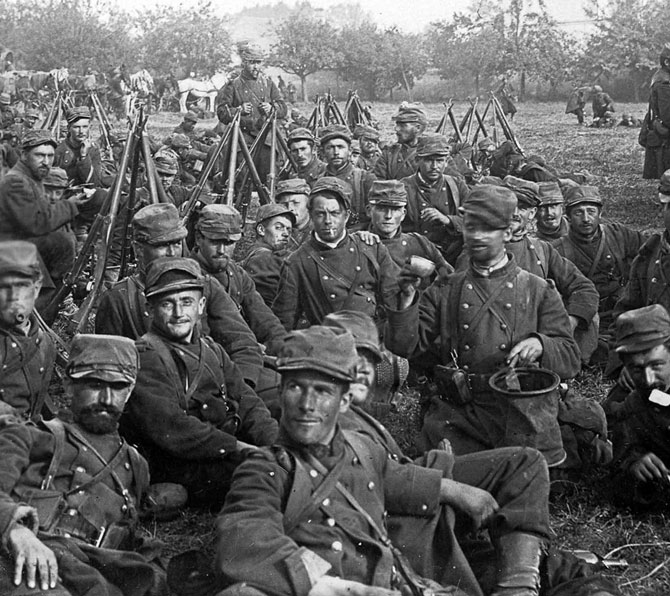
Photo credit: Bibliotheque nationale de France / National Library of Scotland / National Archives
Soldiers struggle to pull a huge piece of artillery through mud. The gun has been placed on a track created for a light railway. The soldiers are pushing a device, attached to the gun, that possibly slots into the tracks. Some of the men are in a ditch that runs alongside the track, the rest are on the track itself. A makeshift caterpillar tread has been fitted to the wheels of the gun, in an attempt to aid its movement through the mud.
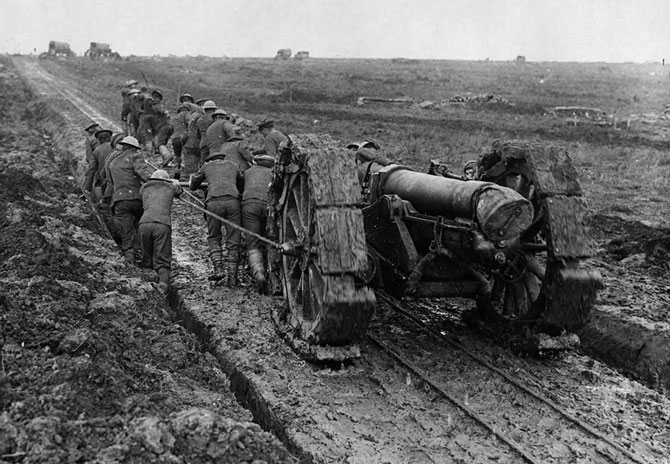
Photo credit: Bibliotheque nationale de France / National Library of Scotland / National Archives
Members of New Zealand’s Maori Pioneer Battalion perform a haka for New Zealand’s Prime Minister William Massey and Deputy Prime Minister Sir Joseph Ward in Bois-de Warnimont, France, during World War I, on June 30, 1918.
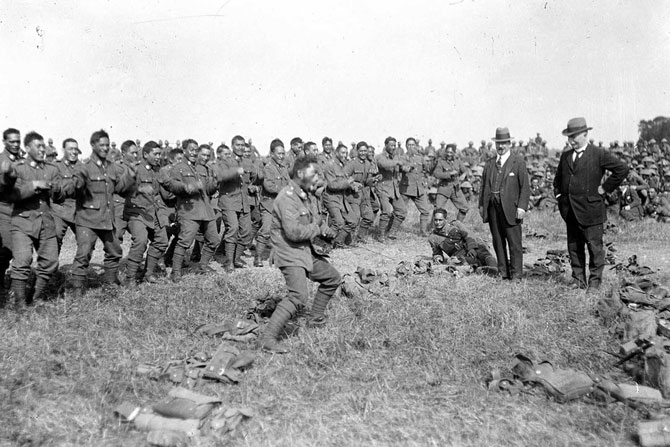
Photo credit: Bibliotheque nationale de France / National Library of Scotland / National Archives
In France, a British machine-gun team. The gun, which appears to be a Vickers, is mounted on the front of a motorcycle side car.
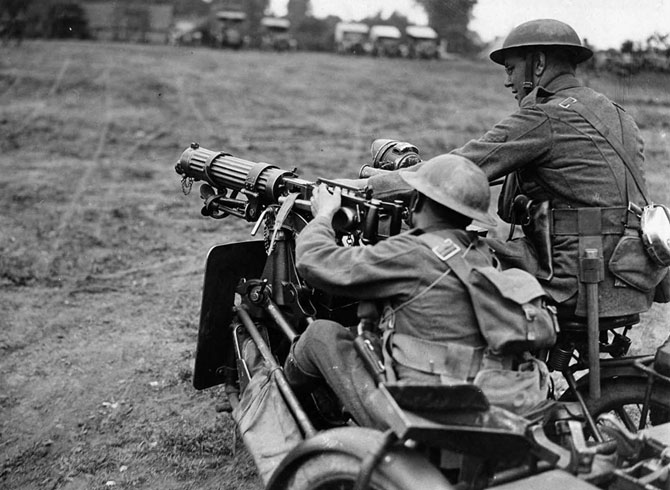
Photo credit: Bibliotheque nationale de France / National Library of Scotland / National Archives
A German prisoner, wounded and muddy, helped by a British soldier along a railway track. A man, possibly in French military uniform, is shown behind them, holding a camera and tripod, ca. 1916.
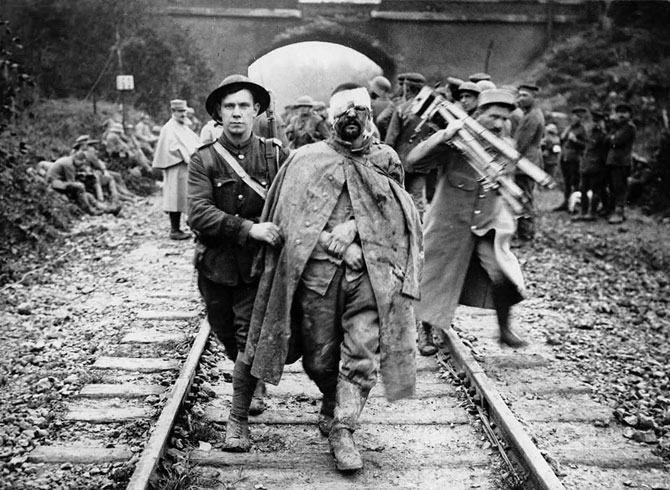
Photo credit: Bibliotheque nationale de France / National Library of Scotland / National Archives
Dead horses are buried in a trench after the Battle of Haelen which was fought by the German and Belgian armies on August 12, 1914 near Haelen, Belgium. Horses were everywhere in World War I, used by armies, and caught up in farm fields turned into battlefields, millions of them were killed
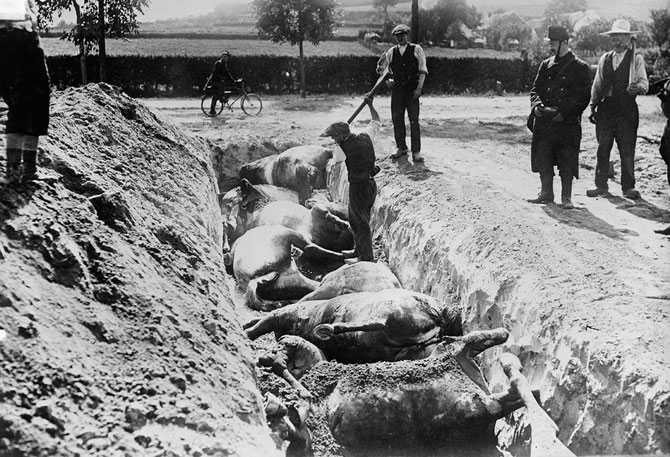
Photo credit: Bibliotheque nationale de France / National Library of Scotland / National Archives
Ruins of Gommecourt Chateau, France. The small community of Gommecourt sat on the front lines for years, changing hands numerous times, and was bombed into near-oblivion by the end.
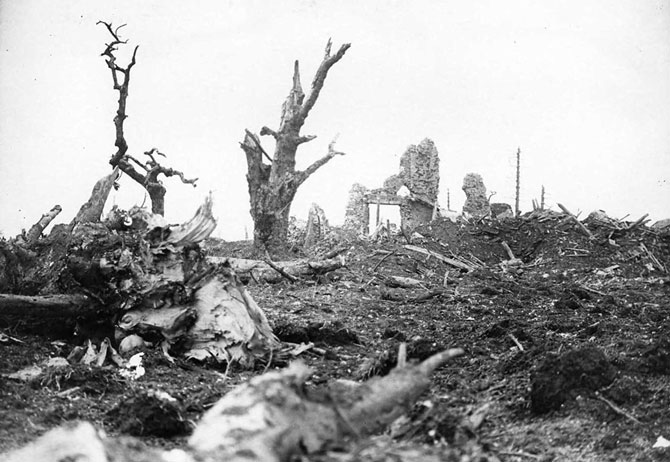
Photo credit: Bibliotheque nationale de France / National Library of Scotland / National Archives
British soldiers standing in mud on the French front lines, ca. 1917.
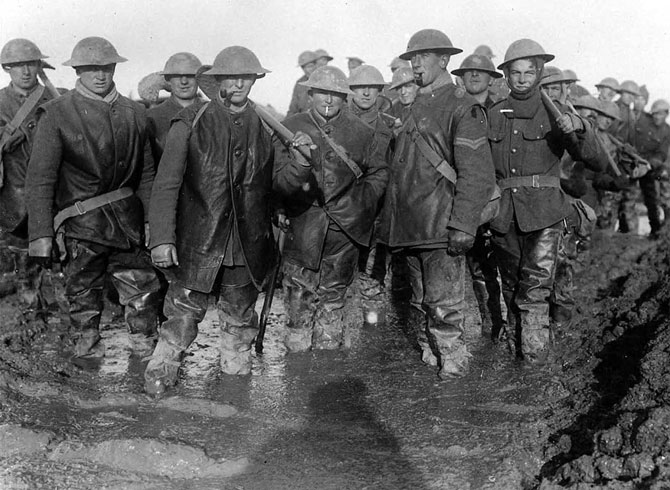
Photo credit: Bibliotheque nationale de France / National Library of Scotland / National Archives
German soldiers make observations from atop, beneath, and behind large haystacks in southwest Belgium, c. 1915
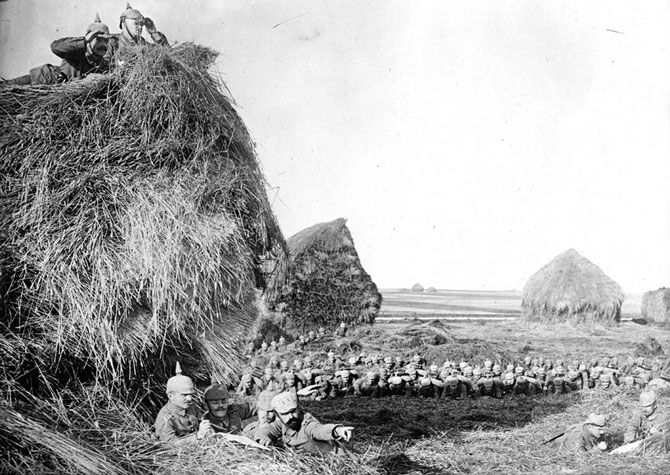
Photo credit: Bibliotheque nationale de France / National Library of Scotland / National Archives
Transport on the Cassel Ypres Hoad at Steenvorde. Belgium, September, 1917. This image was taken using the Paget process, an early experiment in color photography.
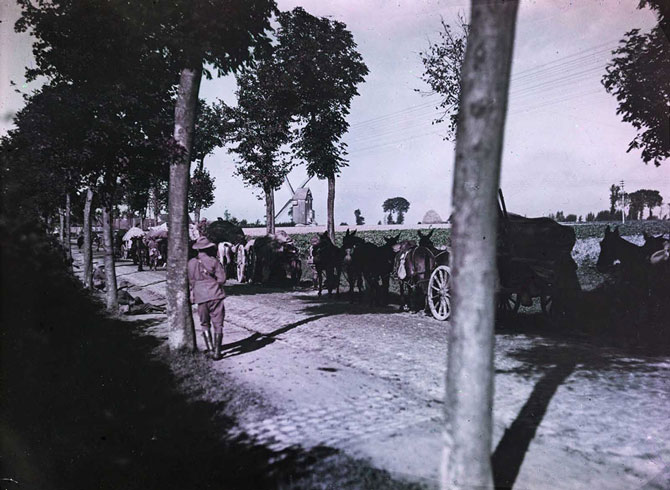
Photo credit: Bibliotheque nationale de France / National Library of Scotland / National Archives
Mountains of shell cases on the roadside near the front lines, the contents of which had been fired into the German lines.
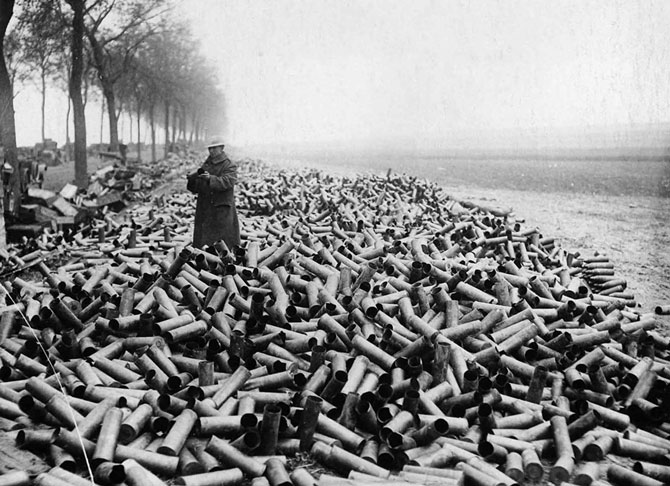
Photo credit: Bibliotheque nationale de France / National Library of Scotland / National Archives
Battlefield in the Marne between Souain and Perthes, 1915
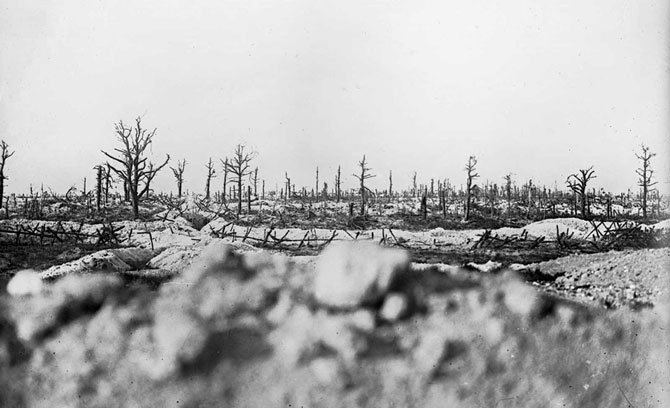
Photo credit: Bibliotheque nationale de France / National Library of Scotland / National Archives
Soldiers in trenches during write letters home. Life in the trenches was summed up by the phrase which later became well-known: “Months of boredom punctuated by moments of extreme terror.”
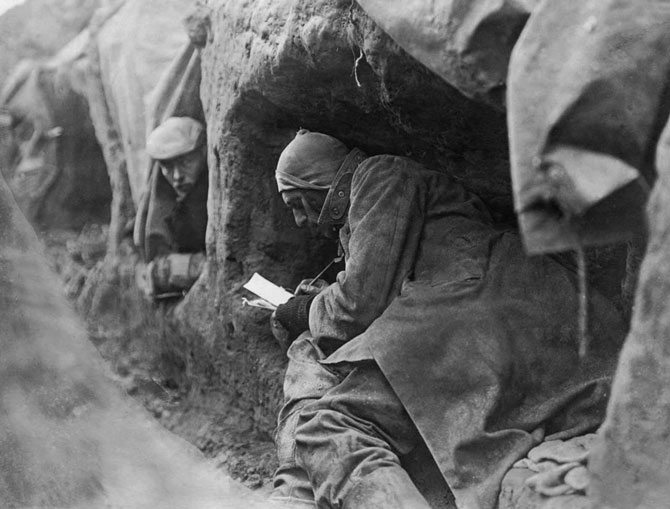
Photo credit: Bibliotheque nationale de France / National Library of Scotland / National Archives
At Cambrai, German soldiers load a captured British Mark I tank onto a railroad, in November of 1917. Tanks were first used in battle during World War I, in September of 1916, when 49 British Mark I tanks were sent in during the Battle of Flers-Courcelette.
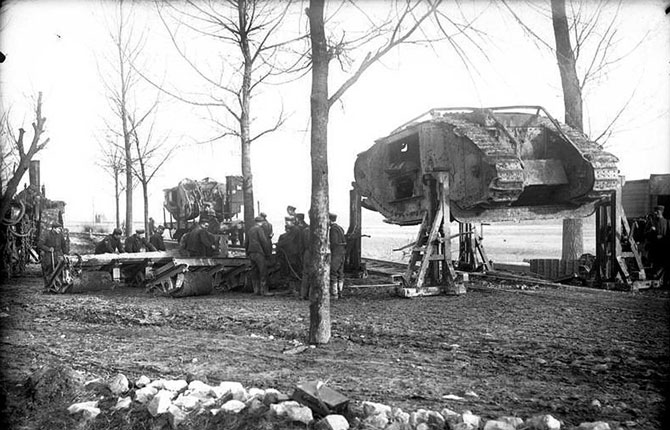
Photo credit: Bibliotheque nationale de France / National Library of Scotland / National Archives
At a height of 150 meters above the fighting line, a French photographer was able to capture a photograph of French troops on the Somme Front, launching an attack on the Germans, ca. 1916. The smoke may have been deployed intentionally, as a screening device to mask the advance.
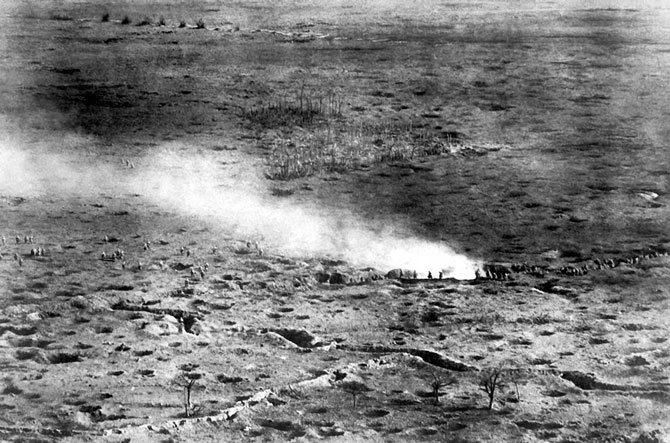
Photo credit: Bibliotheque nationale de France / National Library of Scotland / National Archives
British soldiers on Vimy Ridge, 1917. British and Canadian forces pushed through German defenses at the Battle of Vimy Ridge in April of 1917, advancing as far as six miles in three days, retaking high ground and the town of Thelus, at the cost of nearly 4,000 dead.
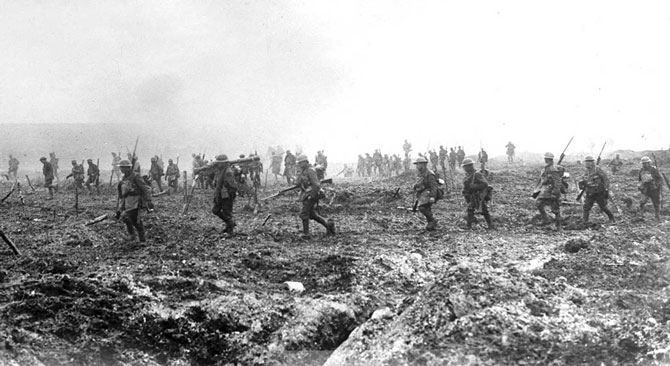
Photo credit: Bibliotheque nationale de France / National Library of Scotland / National Archives
An explosion near trenches dug into the grounds of Fort de la Pompelle, near Reims, France.
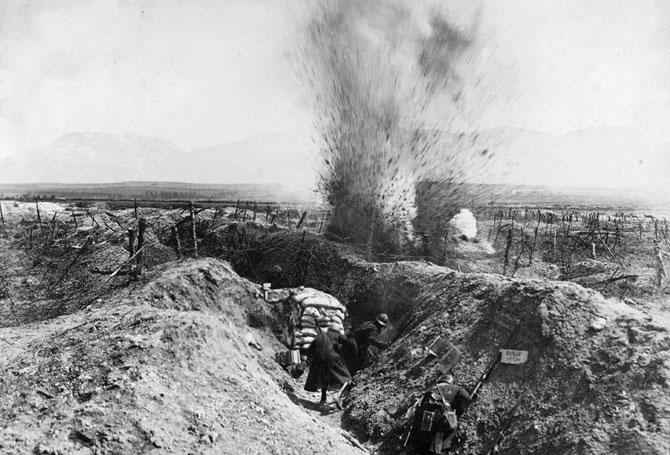
Photo credit: Bibliotheque nationale de France / National Library of Scotland / National Archives
Canadian soldiers tend to a fallen German on the battlefield at the Battle of Vimy Ridge in 1917.
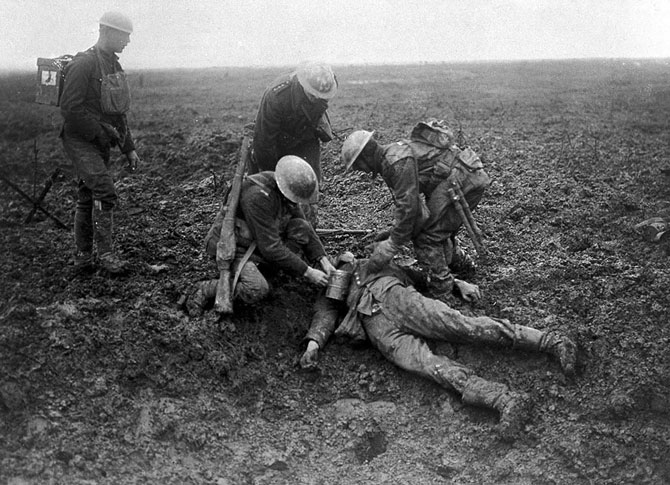
Photo credit: Bibliotheque nationale de France / National Library of Scotland / National Archives
French soldiers make a gas and flame attack on German trenches in Flanders, Belgium, on January 1, 1917. Both sides used different gases as weapons during the war, both asphyxiants and irritants, often to devastating effect.
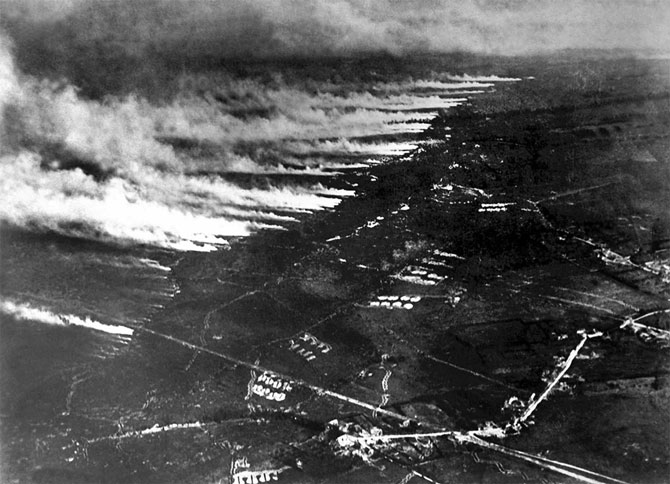
Photo credit: Bibliotheque nationale de France / National Library of Scotland / National Archives
French soldiers wearing gas masks in a trench, 1917. gas mask technology varied widely during the war, eventually developing into an effective defense, limiting the value of gas attacks in later years.
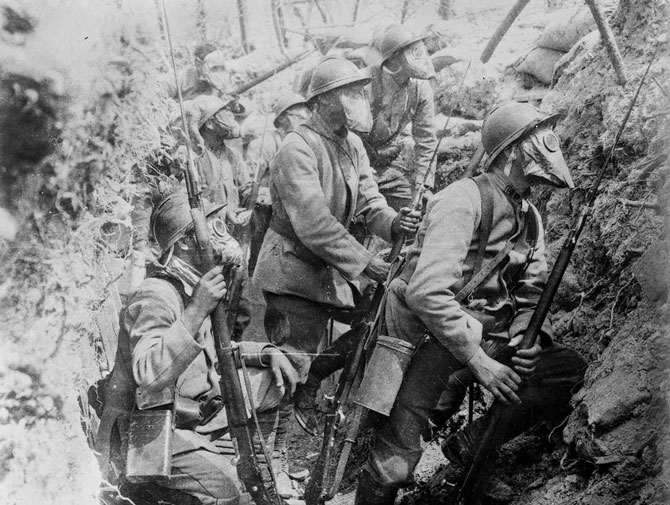
Photo credit: Bibliotheque nationale de France / National Library of Scotland / National Archives
Gassed patients are treated at the 326th Field Hospital near Royaumeix, France, on August 8, 1918. The hospital was not large enough to accommodate the large number of patients.
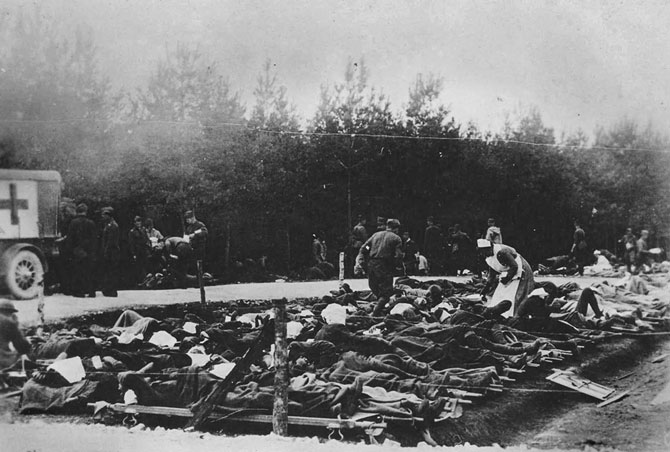
Photo credit: Bibliotheque nationale de France / National Library of Scotland / National Archives
French soldier in gas mask, 1916.
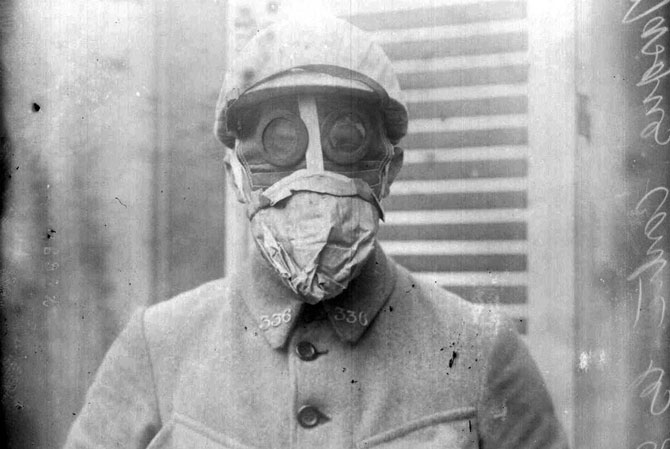
Photo credit: Bibliotheque nationale de France / National Library of Scotland / National Archives
British soldiers and Highlanders with German prisoners walk past war ruins and a dead horse, after the Battle of the Menin Road Ridge, part of the Third Battle of Ypres in September of 1917. The sign near the railroad tracks reads (possibly): “No Trains. Lorries for Walking Wounded at Chateau [Potijze?]”.
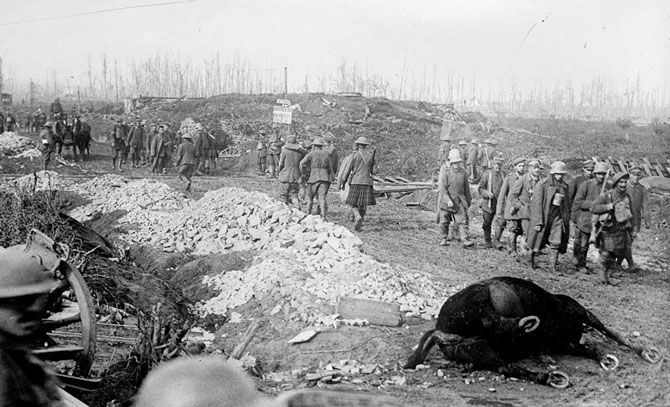
Photo credit: Bibliotheque nationale de France / National Library of Scotland / National Archives
A gigantic shell crater, 75 yards in circumference, Ypres, Belgium, October 1917.
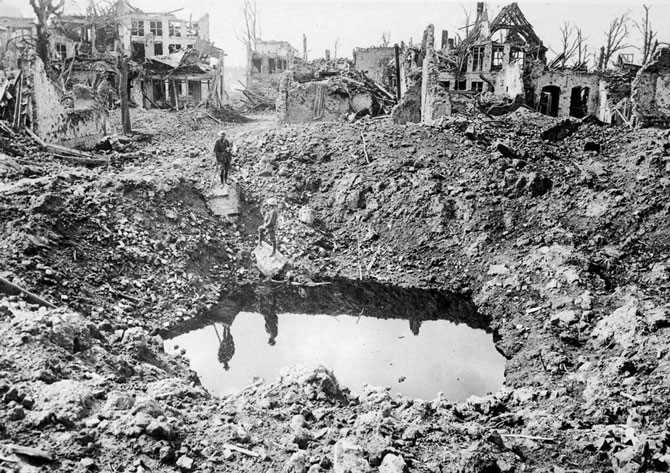
Photo credit: Bibliotheque nationale de France / National Library of Scotland / National Archives
A horse is restrained while it is attended to at a veterinary hospital in 1916.
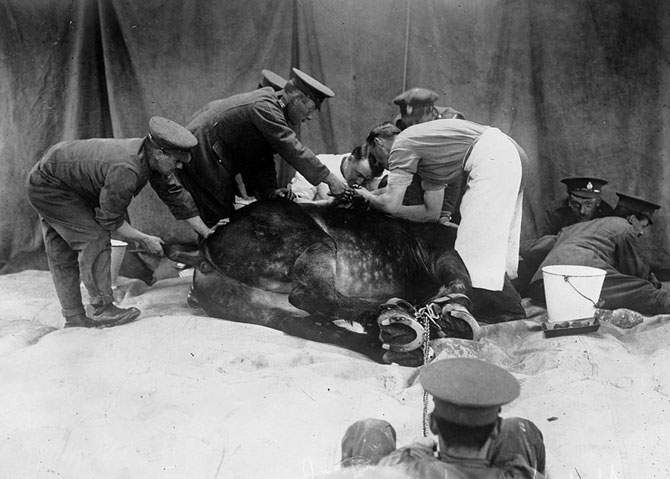
Photo credit: Bibliotheque nationale de France / National Library of Scotland / National Archives
Cleaning up German trenches at St. Pierre Divion. In the foreground a group of British soldiers are sorting through equipment abandoned in the trenches by the Germans when St Pierre Divion was captured. One soldier has three rifles slung on his shoulder, another has two. Others are looking at machine gun ammunition. The probable photographer, John Warwick Brooke, has achieved considerable depth of field as many other soldiers can be seen in the background far along the trenches.
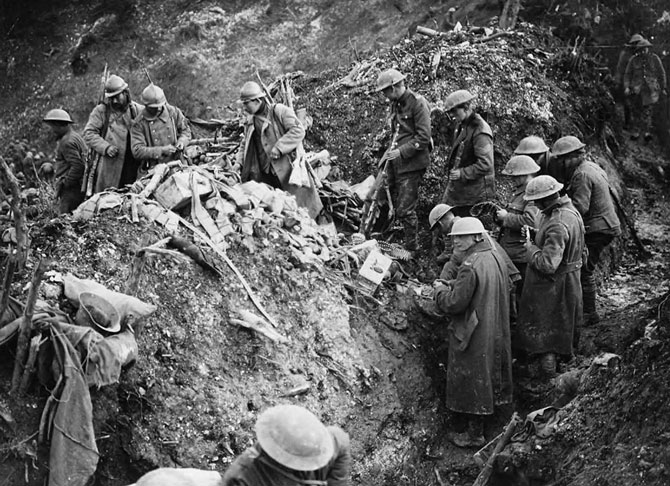
Photo credit: Bibliotheque nationale de France / National Library of Scotland / National Archives
Bringing Canadian wounded to the Field Dressing Station, Vimy Ridge in April of 1917. German prisoners assist in pushing the rail car.
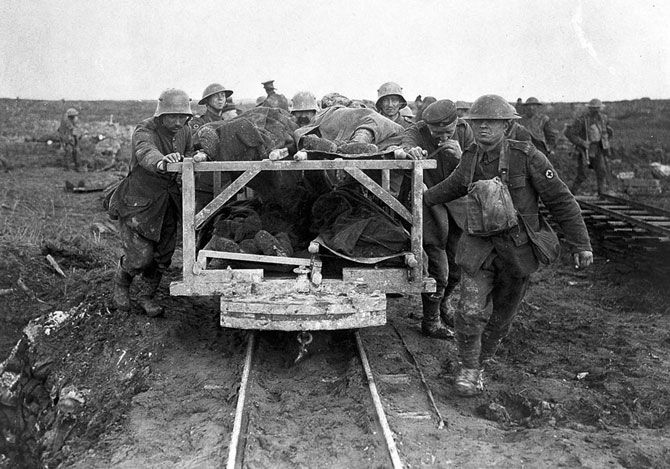
Photo credit: Bibliotheque nationale de France / National Library of Scotland / National Archives
On the British front, Christmas Dinner, 1916, in a shell hole beside a grave.
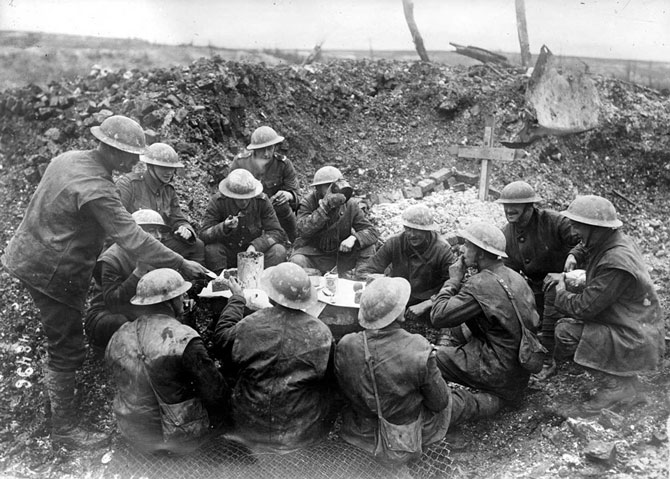
Photo credit: Bibliotheque nationale de France / National Library of Scotland / National Archives
British MkIV “Bear” tank, abandoned after battle near Inverness Copse, on August 22 , 1917.
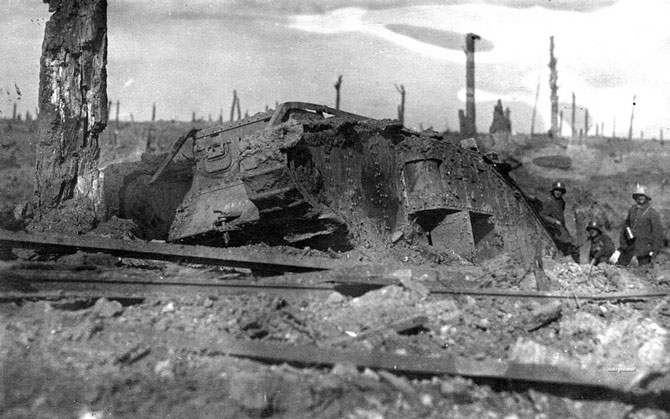
Photo credit: Bibliotheque nationale de France / National Library of Scotland / National Archives
A mine tunnel is dug under the German lines on the Vosges front, on October 19, 1916. The sappers worked at a depth of about 17 meters, until they reached a spot below enemy positions, when large explosives would be placed and later detonated, destroying anything above.
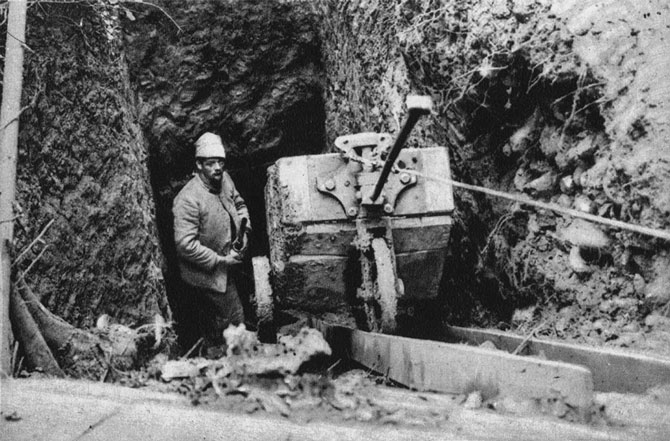
Photo credit: Bibliotheque nationale de France / National Library of Scotland / National Archives
Men wounded in the Ypres battle of September 20th, 1917. Walking along the Menin road, to be taken to the clearing station. German prisoners are seen assisting at stretcher bearing.
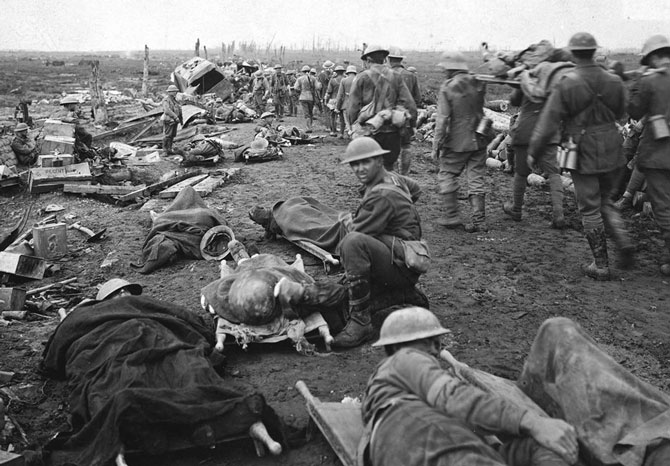
Photo credit: Bibliotheque nationale de France / National Library of Scotland / National Archives
Soldier’s comrades watch him as he sleeps, near Thievpal, France. Soldiers are standing in a very deep, narrow trench, the walls of which are entirely lined with sandbags. At the far end of the trench a line of soldiers are squashed up looking over each others’ shoulders at the sleeping man.
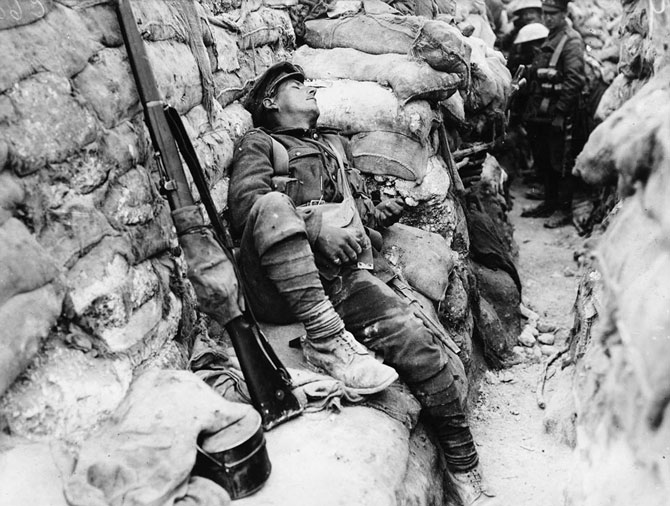
Photo credit: Bibliotheque nationale de France / National Library of Scotland / National Archives

